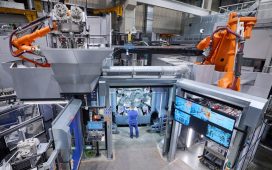According to a new report by Reuters, Tesla performed “intentional inflation” about the range estimates of its electric vehicles under the guidance of CEO Elon Musk.
An anonymous source said the automaker had started to use algorithms about a decade ago that would inflate projections at a full charge. Then, once Teslas reach a 50 percent state of charge, the numbers get a bit more realistic so drivers have a better chance of avoiding getting stranded, along with a 15-mile buffer that allows the vehicle to drive on battery after it reaches zero. According to the source, “Elon wanted to show good range numbers when fully charged.”
The Reuters report also claims that Tesla created a dedicated “Diversion Team” last summer focused solely on canceling service appointments from customers concerned because their vehicles fell short of the misleading range estimate shown after a full charge. According to the story, team members would hit a note on a xylophone after each cancellation, and the employees were told that each canceled appointment saved the company about $1,000.
Tesla didn’t provide a response or quote for the Reuters story, but companies like Apple have admitted issues with their prediction algorithms before. Long before the $113 million “batterygate” settlement over throttling, Apple faced the issue of the iPhone 4 dropping signal depending on how you held it. The company eventually said it was “stunned” to find out its formula for signal strength was wrong and “in many instances, mistakenly displays 2 more bars than it should.”
Regulators worldwide have dinged Tesla over its inflated range estimates. In the US, the Environmental Protection Agency made Tesla reduce its 2020 model-year vehicle range estimates by an average of 3 percent. And earlier this year, the automaker was fined $2.2 million in South Korea for only delivering as little as half of its cars’ estimated range in cold weather.
Across the electric vehicle industry, it’s common to see larger range numbers at a full charge and see faster drop-offs later — especially when driving on highways. EVs use significantly more energy in constant motion, with no regenerative braking being applied to give batteries some return energy, and sometimes go much further in city driving. The report was backed up by data from EV analytics firm Recurrent, which said that, based on its study of real-world versus estimated range, estimates in cars like the Ford Mustang Mach-E, Chevrolet Bolt, and Hyundai Kona were more accurate, with the Kona generally underestimating its actual range.












